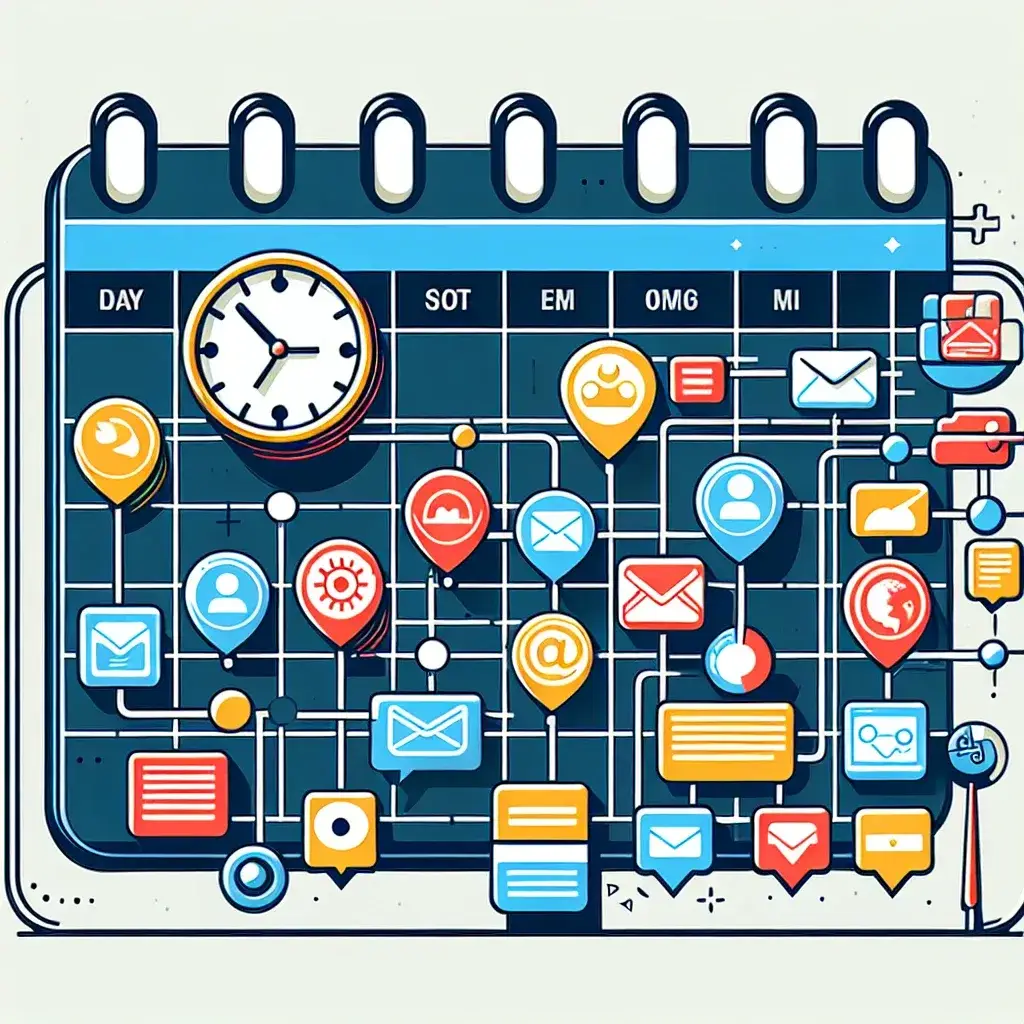In today’s digital age, content is king. However, simply creating content is not enough; you need a well-thought-out content posting schedule to ensure your content reaches the right audience at the right time. This article will guide you through the process of setting up a content posting schedule across various platforms to maximize your impact and engagement.
Understanding the Importance of a Content Posting Schedule
A content posting schedule is a strategic plan that outlines when and where your content will be published. It helps you stay organized, ensures consistent content delivery, and maximizes your audience’s engagement. Here are some key reasons why a content posting schedule is essential:
- Consistency: Regular posting keeps your audience engaged and coming back for more.
- Planning: A schedule allows you to plan your content in advance, making it easier to manage your workload.
- Analytics: Tracking your posting times helps you understand what works best and refine your strategy.
- Resource Management: It helps you allocate resources efficiently, ensuring that you have the necessary time and tools to create high-quality content.
Steps to Create a Content Posting Schedule
1. Define Your Goals
Before you start creating a content posting schedule, it’s crucial to define your goals. What do you want to achieve with your content? Are you looking to increase brand awareness, generate leads, or drive sales? Clearly defining your goals will help you create a schedule that aligns with your overall marketing strategy.
2. Identify Your Target Audience
Understanding your target audience is essential for creating content that resonates with them. Consider the following factors:
- Demographics: Age, gender, location, and other demographic information.
- Interests: What topics and activities interest your audience?
- Behavior: When and how do they engage with content?
Use this information to tailor your content and posting times to meet the needs and preferences of your audience.
3. Choose the Right Platforms
Not all social media platforms are created equal, and not all of them may be suitable for your brand. Consider the following popular platforms and their unique characteristics:
- Facebook: Ideal for building brand awareness and engaging with a broad audience.
- Instagram: Perfect for visual content and connecting with a younger audience.
- Twitter: Great for real-time engagement and sharing news and updates.
- LinkedIn: Best for professional networking and B2B marketing.
- YouTube: Excellent for video content and reaching a large audience.
- LinkedIn: Ideal for professional networking and thought leadership.
Select the platforms that align with your goals and audience preferences.
4. Determine Optimal Posting Times
The timing of your posts is crucial for maximizing engagement. Here are some tips for determining the best posting times:
- Research: Use tools like Google Analytics, social media insights, and third-party analytics platforms to identify when your audience is most active.
- Experiment: Try posting at different times and analyze the results to see what works best.
- Consistency: Once you find the optimal times, stick to them to build a routine for your audience.
5. Create a Content Calendar
A content calendar is a visual representation of your posting schedule. It helps you plan and organize your content in advance. Here’s how to create one:
- Choose a Tool: Use a digital calendar like Google Calendar, Trello, or a specialized content calendar tool like CoSchedule or Asana.
- Map Out Your Content: Add all your planned content, including blog posts, social media updates, and email newsletters.
- Set Deadlines: Assign deadlines for content creation, review, and posting.
- Assign Roles: If you have a team, assign specific tasks to each member to ensure everyone knows their responsibilities.
6. Use Scheduling Tools
To streamline your content posting process, consider using scheduling tools. These tools allow you to schedule posts in advance, saving you time and effort. Some popular scheduling tools include:
- Buffer: A versatile tool for scheduling posts on multiple platforms.
- Hootsuite: Offers advanced analytics and scheduling features.
- Sprout Social: Provides comprehensive social media management and analytics.
- Later: Ideal for scheduling Instagram content, including stories and reels.
Choose a tool that fits your needs and budget.
7. Monitor and Adjust
Your content posting schedule is not set in stone. It’s important to regularly monitor the performance of your content and make adjustments as needed. Here are some steps to follow:
- Track Metrics: Use analytics tools to track engagement, reach, and conversion rates.
- Analyze Results: Identify what’s working and what’s not. Look for patterns and trends.
- Make Adjustments: Based on your analysis, adjust your content and posting times to optimize performance.
8. Engage with Your Audience
Posting content is just the first step. To build a strong relationship with your audience, you need to engage with them regularly. Here are some tips:
- Respond to Comments: Reply to comments and messages promptly to show that you value your audience’s feedback.
- Encourage Interaction: Ask questions, run polls, and create interactive content to encourage engagement.
- Collaborate: Partner with other creators and brands to reach a wider audience.
Conclusion
Creating a content posting schedule across platforms is a strategic process that requires careful planning and execution. By following the steps outlined in this guide, you can develop a schedule that maximizes your reach, engagement, and overall impact. Remember to stay flexible and adapt your strategy based on the performance of your content. With the right approach, you can build a strong online presence and achieve your marketing goals.

